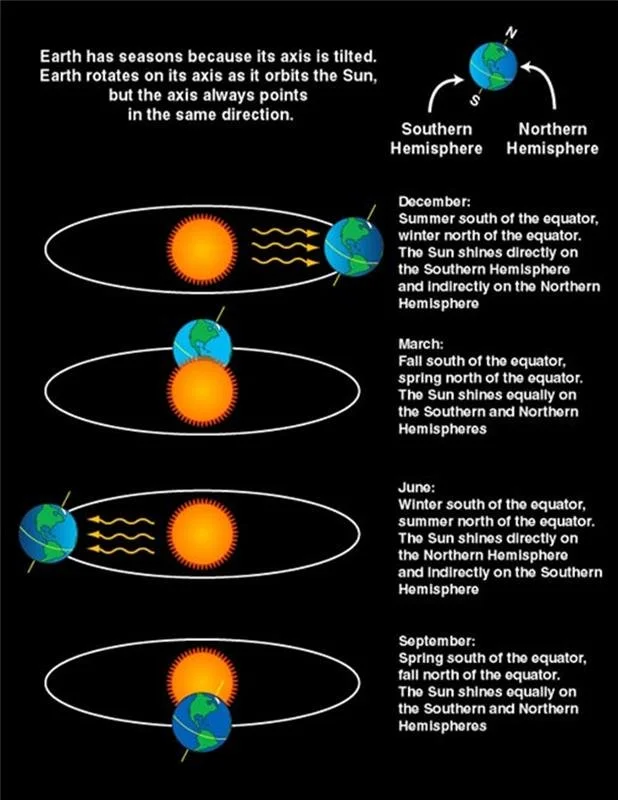Celestial Winter has arrived
The vernal equinox is an astronomical event that occurs twice a year, in March and September, when the Earth's axis is perpendicular to the Sun's rays, causing day and night to be of approximately equal length.
In the Southern Hemisphere, the March equinox marks the beginning of autumn and occurs around March 22. This is when the tilt of the Earth's axis is not tilted toward or away from the Sun. As a result, the Sun's rays shine directly over the equator, causing an equal amount of sunlight to fall on the Northern and Southern Hemispheres. This is also the two days when the sun truly rises in the east and sets in the west. From Equiniox until Winter solstice the suns path moves further south and the sun’s maximum azimuth reduces each day.
Building design can take into account the solstice by considering the path of the Sun during these times of the year. In particular, the orientation of a building can have a significant impact on its energy efficiency and comfort levels for occupants.
For example, in temperate Australia, it is often desirable to design buildings with large north-facing windows to allow for maximum solar gain during the winter months, when the Sun is at a lower angle in the sky. This can help to reduce heating requirements and lower energy costs.
Conversely, during the summer months, when the Sun is at a higher angle in the sky, it is important to minimize solar heat gain to prevent the building from overheating. This can be achieved through the use of shading devices such as eaves, overhangs, and blinds, as well as through the use of reflective or low-emissivity glazing.
By taking into account the path of the Sun during these times of the year, designers can create more energy-efficient and comfortable buildings that respond to the local climate and environment.
Did you know that the equinox determines when Easter is celebrated?
The solstice and Easter are two separate events with different origins and meanings. However, there is a historical connection between them in some cultures and religious traditions.
Easter, is a Christian holiday that celebrates the resurrection of Jesus Christ from the dead. It is celebrated on the first Sunday following the first full moon after the vernal equinox.
The connection between the solstice and Easter can be traced back to the early Christian church, which adopted many pagan traditions and practices in an effort to convert people to Christianity. The vernal equinox was a significant event in many ancient cultures, as it marked the beginning of spring and the rebirth of nature. The early Christians chose to celebrate Easter around the same time as the vernal equinox to symbolize the resurrection of Jesus as a new beginning and a rebirth of spiritual life.
In some cultures, such as the Scandinavian countries, the solstice and Easter are still closely linked. In these traditions, the spring equinox is celebrated with the lighting of bonfires to drive away evil spirits and welcome the return of the sun. This celebration is known as Ostara or Eostre, which is where the modern name "Easter" may have originated.

